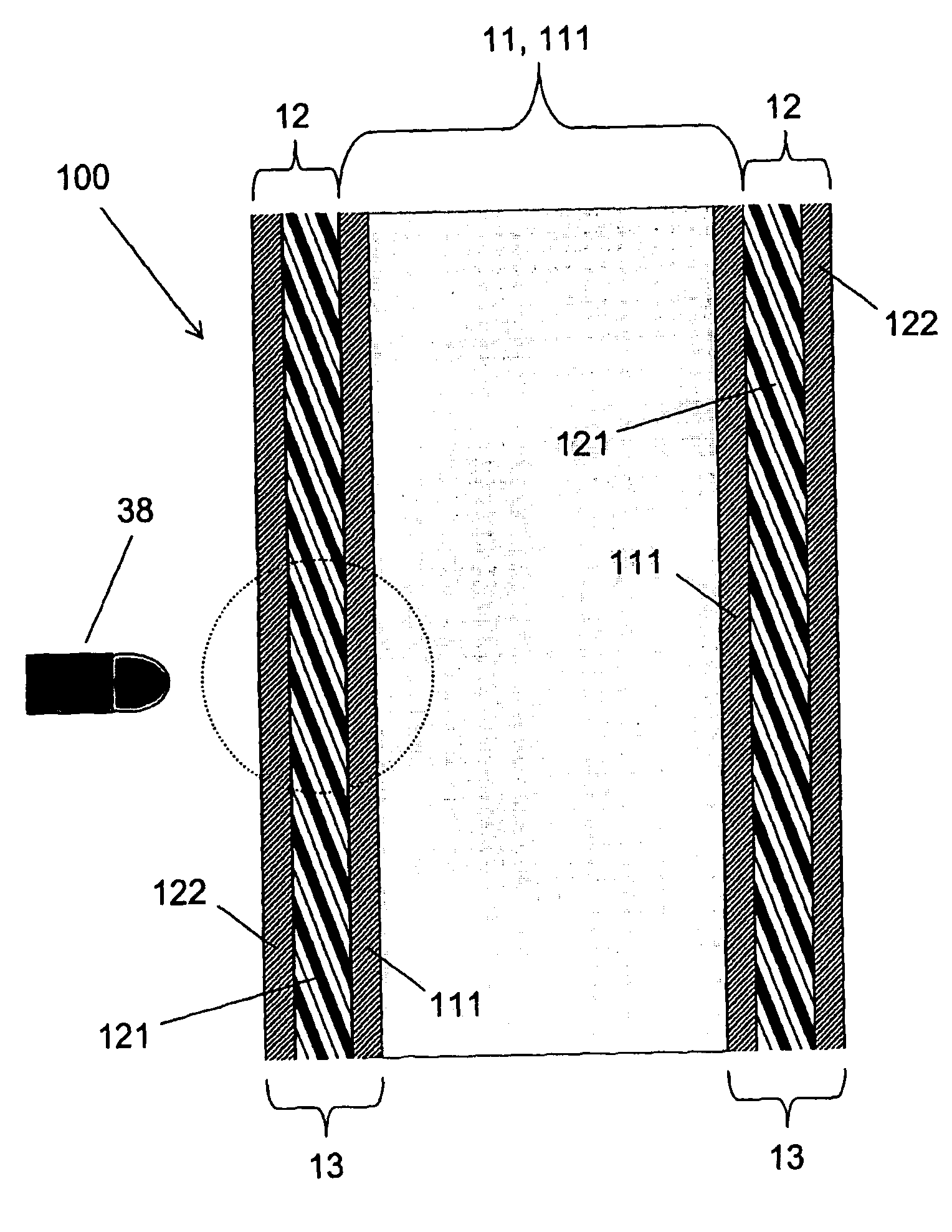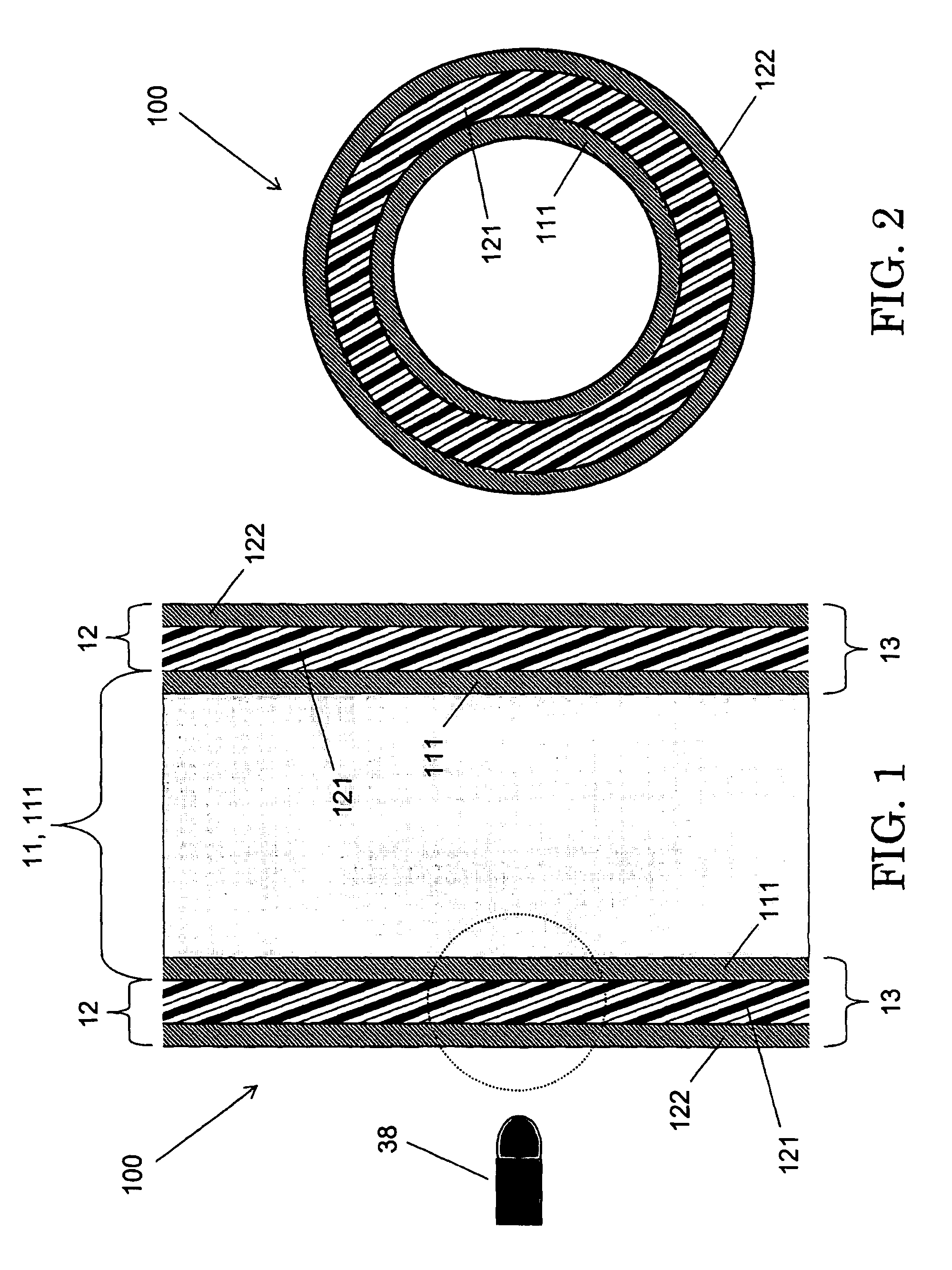Elastomeric damage-control barrier
a technology of elastomeric and barrier, applied in the field of protective coverings, can solve the problems of posing a great risk to the occupants of the marine vessel, chemical leakage hazard or fire hazard, and achieve the effect of reducing or minimizing the damage ensuing
- Summary
- Abstract
- Description
- Claims
- Application Information
AI Technical Summary
Benefits of technology
Problems solved by technology
Method used
Image
Examples
Embodiment Construction
[0033]Referring now to FIG. 1 through FIG. 3, a conventional pipe 11 having a cylindrical metal pipe wall 111 is covered with a cylindrical protective barrier 12 in accordance with the present invention. Protective barrier 12 includes an elastomeric layer 121 and a cylindrical metal sleeve 122, the elastomeric layer 121 being situated intermediate the pipe wall 111 and the sleeve 122. Elastomeric layer 121 is composed of a polymer (e.g., polyurea or polyurethane) characterized by high strain-rate sensitivity (strong strain-rate sensitivity). The present invention's combination 10, which includes the pipe 11 and the present invention's protective barrier 12, thus represents a laminar material system that includes three adjacent layers. In this multilayer system, a highly rate-sensitive elastomeric layer 121 is sandwiched between two “rigid” (i.e., more rigid than the elastomer of layer 121) layers, viz., pipe wall 111 and sleeve 122.
[0034]Still referring to FIG. 1 through FIG. 3 and ...
PUM
| Property | Measurement | Unit |
|---|---|---|
| Young's modulus | aaaaa | aaaaa |
| Young's modulus | aaaaa | aaaaa |
| Young's modulus | aaaaa | aaaaa |
Abstract
Description
Claims
Application Information
 Login to View More
Login to View More - R&D
- Intellectual Property
- Life Sciences
- Materials
- Tech Scout
- Unparalleled Data Quality
- Higher Quality Content
- 60% Fewer Hallucinations
Browse by: Latest US Patents, China's latest patents, Technical Efficacy Thesaurus, Application Domain, Technology Topic, Popular Technical Reports.
© 2025 PatSnap. All rights reserved.Legal|Privacy policy|Modern Slavery Act Transparency Statement|Sitemap|About US| Contact US: help@patsnap.com



